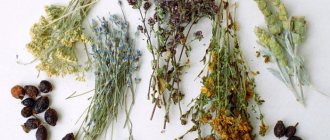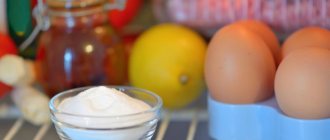What is fiber?
Fiber is a type of carbohydrate, but, unlike other substances in the group, it cannot be broken down into digestible glucose molecules.
Thus, the fiber passes through the entire digestive tract practically unchanged. However, fiber does a lot of work along the way. This substance is of great importance for proper digestion and weight correction, regulation of sugar and cholesterol levels in the blood. There is also an opinion that fiber is one of the factors that prevents the development of cancer. Some talk about it as a substance that prolongs the youth of the body.
Daily norms
Researchers say the average woman consumes about 13 grams of fiber daily, and men about 17 grams. Meanwhile, nutritionists have found that fiber is so important for humans that it should be present in the diet every day. At the same time, men under 50 years old should consume approximately 38 grams of fiber per day, older ones - about 30 grams. Women under 50 years of age are recommended to consume about 25 g of the substance daily, and 21 g per day is enough for women over 50. It is not difficult to provide yourself with these portions if your daily diet contains whole fruits and vegetables, nuts and seeds.
The required amount of fiber for children is determined taking into account age categories: children under 3 years old should receive 19 g of the substance per day, 4-8 years old - about 25 g per day, girls 9-18 years old - 26 g each, boys 9-13 years old – 31 g each, boys 14-18 years old – 38 g each.
Nutritionists say that the ratio of insoluble to soluble fiber should be 75% to 25%. But since many products (rolled oats, bran, flax seeds and others) contain two types of dietary fiber, you should not specifically calculate the proportions.
What is dietary fiber?
Dietary fiber, or fiber, refers to carbohydrates in plants that your body cannot digest.
Once dietary fiber reaches your colon, it is either broken down by gut bacteria or passed out of your body in your stool ().
There are two main types of dietary fiber – soluble and insoluble. Most high fiber foods contain a combination of them, but they are usually richer in one type (,).
In the intestines, soluble dietary fiber absorbs water and becomes gel-like. This allows your gut bacteria to break them down easily. Chia seeds and oats are rich in soluble dietary fiber (, ,).
In contrast, insoluble dietary fiber has a more rigid microscopic structure and does not absorb water. Instead, they add bulk to the stool. Fruits and vegetables contain large amounts of insoluble dietary fiber (,).
You should aim to eat 14 grams of fiber for every 1,000 calories you consume per day. This is about 25 grams for women and 38 grams for men. Unfortunately, only about 5% of people reach this recommended amount ().
Not getting enough fiber can negatively impact your health. For example, diets low in fiber have been linked to digestive tract problems such as constipation and dysbiosis, which is the abnormal growth of harmful bacteria in the intestines (, , ).
Diets low in dietary fiber are also associated with an increased risk of obesity, colon cancer, and breast cancer (, , ).
Conclusion:
Dietary fiber, also known as fiber, refers to carbohydrates that your body cannot digest. Most people don't eat enough fiber. Recommendations suggest women should consume about 25 grams of fiber per day, while men should consume 38 grams.
Soluble fiber vs. insoluble fiber
Dietary fiber consists of non-starch polysaccharides such as cellulose, dextrins, inulin, lignin, chitin, pectins, beta-glucans, waxes and oligosaccharides.
There are two main types of fiber: soluble and insoluble.
Soluble fiber
Soluble fiber, as the name implies, dissolves in an aqueous environment, and when passing through the digestive tract, it can be fermented, after which it acquires a jelly-like consistency. It slows down the digestion process, resulting in a feeling of fullness that lasts longer. Thanks to this ability, it helps control appetite, and therefore weight.
Benefits of Soluble Fiber:
- reduces the level of “bad” cholesterol;
- regulates blood sugar concentration, which is important for diabetics and people with metabolic syndrome.
Products containing soluble fiber: fruit pulp, beans, peas, carrots, oats, flaxseeds. All these products dissolve in the body to a gel-like texture.
Insoluble fiber
Benefits of Insoluble Fiber:
- promotes proper intestinal motility and prevents constipation;
- accelerates the removal of toxins from the body through the colon;
- maintains optimal acidity levels in the intestines.
Insoluble fiber retains its shape throughout all stages of digestion. Accelerates the passage of food through the gastrointestinal tract and its elimination, which prevents constipation. Examples of insoluble fiber are hemicellulose, cellulose and lignin.
Foods rich in insoluble fiber: vegetables and fruits (peels), beans, greens, nuts, seeds.
Many foods contain both soluble and insoluble fiber. But their proportions vary. Meanwhile, substances from both categories have a beneficial effect on the functioning of the body.
Types of fiber
There are two main types of fiber:
- Soluble fiber.
This includes lignin and cellulose. Dissolving in water, it leaves behind a stretchy mass that can reduce glucose and cholesterol levels. Contained in the following products: plantain, beans, oats, apples, peas, citrus fruits, carrots. The most famous representative of soluble fiber is pectin. It is able to absorb a fairly large amount of moisture and form a jelly-like composition. In addition to the listed properties, soluble fiber removes bile acids and “bad” substances from the body that interfere with its normal functioning. - Insoluble fiber.
The following type of dietary fiber is not digested by gastrointestinal enzymes and helps speed up the process of bowel movement. An ideal solution for those who suffer from constipation - in a short time the stool returns to normal. This fiber is found in flour, nuts, bran and some vegetables. Its work is similar to a sponge - it absorbs bile acids, cholesterol, radionuclides and even salts of heavy metals, then promotes their rapid removal from the body.
Different foods contain different amounts of dietary fiber, so to maximize their effectiveness, it is recommended to eat a varied diet.
Benefits for humans
Regular consumption of fiber is very important for the health of the body. For example, it is known that consumption of soluble fiber protects against the development of cardiac diseases, in particular by reducing cholesterol concentrations. An insoluble substance reduces the risk of constipation, colitis, colon cancer, and hemorrhoids. Researchers say consuming fiber-rich foods reduces the risk of diverticulitis (small protrusions in the colon). You can also get rid of irritable bowel syndrome with the help of dietary fiber. People with diabetes who consume a lot of this substance tend to need less insulin. It has a beneficial effect on the functioning of the kidneys and gallbladder, in particular, it prevents the formation of stones in the organs.
Bran for breakfast
Evgeniy Baigarin, junior researcher at the Research Institute of Nutrition of the Russian Academy of Medical Sciences: – The term “fiber” is somewhat outdated.
It’s correct to say that dietary fiber is the coarsest part of the plant, which our digestive system is not able to break down. Cellular preparations are sources of these very dietary fibers. Those found in plant foods are called dietary. And functional ones are additionally added to finished products or included in dietary supplements. Due to its structure, dietary fiber is retained in the stomach, and then the effect of imaginary saturation occurs. As a result, a person will need less food, making it easier for him to follow a low-calorie diet. And due to the fact that hard-to-digest fibers enter the duodenum in small portions, the glycemic reaction is smoothed out. The concentration of glucose in the blood does not jump, insulin is not released so sharply and not in such quantities. Accordingly, the feeling of hunger does not manifest itself so acutely. In addition, dietary fiber serves as a source of nutrition for colon microorganisms. By stimulating the development of its microflora, dietary fiber has a prebiotic effect.
However, fiber supplements will not help you lose weight on their own. They should be used only as an addition to the varied diet that a person switches to when shedding extra pounds. We can say that these drugs are a kind of psychological incentive: “I take them, which means I will definitely lose weight.” But if you add food and rye bran soaked in milk, kefir, yogurt or juice with pulp to your diet, the benefits for weight loss will be obvious. This dish can be used as a substitute for a light dinner so you don’t overeat at night. You can also have bran for breakfast.
Fiber and...
…cholesterol
Dietary fiber helps lower cholesterol levels. The process of digesting food requires bile acids, which are partly composed of sterol. To improve digestion, the liver pulls cholesterol from the blood to create bile acids, thereby reducing the concentration of so-called “bad” cholesterol.
…heart health
A link has also been found between fiber intake and the risk of heart attack. In people whose diet is based on foods rich in fiber, the risk of heart disease is reduced by 40%. And just increasing your daily fiber intake by 7 grams is enough to reduce your risk of heart attack by 7%.
…blood sugar
Research has shown a connection between fiber and blood glucose levels. American scientists have noticed that increased consumption of fiber can reduce glucose levels. In addition, the risk of developing diabetes is reduced in people who consume enough fiber daily. Soluble fiber helps slow the breakdown of carbohydrates and the absorption of glucose, which helps control blood sugar levels.
…cancer
Research conducted in 2011 showed a potential relationship between the amount of fiber consumed and the risk of cancer. Then a group of scientists conducted a control experiment on animals, and this time the researchers found that such a connection still exists, but only if the correct microflora is present in the intestines. In this case, the fiber reacts with bacteria in the lower part of the large intestine. Fermentation produces a reactant called butyrate. It is this substance that causes self-destruction of cancer cells.
But this is not the only type of cancer that is affected by fiber. Recently, scientists from Nebraska announced the results of another study. In their opinion, fiber, oddly enough, can also prevent lung cancer. The study found that 68 percent of those who consumed 18 grams or more of fiber per day had excellent lung health. Also, lovers of foods containing fiber turned out to be the best in another test - for lung capacity. Scientists do not yet know how to explain this relationship.
…longevity
According to many scientists, the secret of longevity lies in dietary fiber. And American epidemiologists believe that high-fiber foods can reduce mortality rates. And they add: wheat fiber and whole grain products are especially beneficial for humans. A 14-year follow-up showed that people whose diets included these foods had a 19 percent lower risk of death. By the way, some studies suggest that in ancient times the diet of our ancestors included at least 60 g of dietary fiber per day.
…allergy
In addition to all this, it is believed that fiber also plays a role in preventing food allergies. This theory again stems from the relationship between fiber and gut bacteria.
Scientists suggest that people with impaired intestinal microflora are prone to food allergies, in particular those caused by peanuts, crustaceans and shellfish. And dietary fiber activates the proliferation of the clostridia bacterium, on which the proper functioning of the organ actually depends.
List of foods with healthy fiber for people with food allergies: apples, pears, melon, carrots, potatoes, rutabaga, broccoli, green beans, pumpkin, zucchini. Their plant fiber is presented in high concentration and at the same time they are hypoallergenic products.
…asthma
A similar explanation applies to the effectiveness of fiber in treating asthma. One reason autoimmune diseases develop is that when digestion fails, particles from the intestines enter the bloodstream and cause inflammation. An experiment conducted on rats showed that increased consumption of dietary fiber reduces asthmatic inflammation.
...weight loss
Keeping you feeling full for a long time, fiber helps you lose weight. Therefore, all diets for obese individuals should contain the maximum amount of dietary fiber. The average daily intake of dietary fiber in this case should be about 60 g. In this case, you can resort to the use of pharmaceutical fiber. You can drink it yourself: dilute a tablespoon of the substance with a glass of water and drink 30 minutes before meals (but no more than 6 tablespoons per day). A more pleasant way is to add the substance to ready-made dishes (soups, broths, yoghurts, salads). There is a diet, the essence of which is to drink a liter of kefir and 6 tablespoons of fiber per day. This dietary menu can be used as a 1-day fast or followed for several days.
…healthy skin
The fiber contained in plantain helps eliminate bacteria and fungi from the body that cause acne and rashes. So, at least, some researchers say. There are many other reasons why you should consume enough of this substance. For example, most fiber foods contain high concentrations of vitamins and other nutrients needed to maintain healthy skin.
Health Benefits of Dietary Fiber
You may have heard that adding fiber to your diet can improve your gastrointestinal health.
Indeed, dietary fiber has many beneficial effects on your gut, such as increasing stool mass, reducing constipation, and feeding beneficial gut bacteria.
High-fiber foods are also richer in vitamins, minerals and antioxidants than low-fiber foods such as refined grains. Plus, they may even help you lose weight ().
Improves digestion and intestinal health
Dietary fiber plays many different roles in gut health.
Insoluble fiber helps relieve constipation by adding bulk to stool, while the gel-like consistency of soluble fiber helps move food more easily through the digestive tract ().
One study of more than 62,000 women found that those who ate at least 20 grams of dietary fiber per day were much less likely to experience constipation than those who ate only 7 grams or less per day ().
Another study of 51 people looked at the effects of fiber intake on constipation. Every day for 3 weeks, participants ate 240 grams of bread - rye or white. Rye bread contained 30 grams of fiber, while white bread contained 10 grams.
Compared to the white bread group, the rye bread group experienced 23% faster fecal transit time, 1.4 more bowel movements per week, and softer stools that passed more easily ().
Dietary fiber also acts as a prebiotic, which feeds the beneficial probiotic bacteria in your gut, allowing them to thrive and limit the growth of harmful bacteria.
Prebiotics in dietary fiber may also reduce the risk of colon cancer by promoting healthy intestinal motility and strengthening the layer of tissue lining the intestines ().
Helps control body weight
Consuming dietary fiber can also help you reach your target body weight and maintain a healthy weight.
In one study, 28 adults increased their fiber intake from 16 to 28 grams per day. They followed one of two high-fiber diets daily for four weeks - consuming either 320 grams of beans or a combination of fruits, vegetables and whole grains.
On both high-fiber diets, participants ate about 300 fewer calories per day and lost an average of about 4 pounds. At the same time, they reported higher levels of satiety and lower levels of hunger than before starting the high-fiber diet ().
Eating more fiber may also increase your resting metabolic rate—that is, the number of calories you burn at rest.
A 6-week study of 81 adults found that those who ate a diet that included about 40 grams of fiber per day had a higher metabolic rate and burned 92 more calories per day compared to those who stuck to the diet. meals with only 21 grams of fiber per day ().
In addition, many high-fiber foods, such as whole fruits and vegetables, are low in calories. Try to eat more of these foods to feel full and satisfied. They will help keep your calorie intake low, which can promote weight loss.
May benefit blood sugar control
Eating foods high in fiber helps slow digestion, which can help stabilize blood sugar levels by slowing the absorption of sugar into the bloodstream (,).
In fact, some studies have shown that fiber may help regulate blood sugar and insulin levels. Insulin is a hormone that helps transport sugar present in the blood into your cells and tells your body to burn it for energy or store it as fat ().
Maintaining moderate blood sugar levels is very important because spikes in blood sugar levels can damage your body over time and lead to diseases such as diabetes ().
One study of 19 people with type 2 diabetes examined the effects of eating a high-fiber breakfast on blood sugar levels.
Those who ate a high-fiber breakfast, which included 9–10 grams of fiber, had significantly lower post-meal blood sugar levels than those who ate a low-fiber breakfast, which contained only 2–3 grams () .
What's more, a study of 20 overweight adults found that those who ate at least 8 grams of fiber at breakfast had lower postmeal insulin levels ().
Keeping your insulin levels low can also help you lose weight by reducing the number of calories your body stores as fat ().
May lower cholesterol and blood pressure
Dietary fiber may help reduce high cholesterol and blood pressure, which are risk factors for heart disease.
One 28-day study of 80 people with high cholesterol looked at the heart-healthy effects of consuming fiber.
Researchers observed that people who ate 3 grams of soluble fiber from oats daily experienced a 62% reduction in total cholesterol and a 65% reduction in LDL (bad) cholesterol compared to the control group ().
In another 4-week study, 345 people consumed 3-4 grams of beta-glucan, a soluble dietary fiber found in oats, daily. This group experienced a significant reduction in LDL (bad) cholesterol levels compared to the control group ().
Additionally, eating fiber can lower your blood pressure.
A review of 28 studies found that people whose diets included higher levels of beta-glucan—a type of dietary fiber found in oats—had lower blood pressure than people whose diets contained little fiber ().
To date, most research on dietary fiber and blood pressure has focused on the effects of dietary supplements rather than dietary fiber. In this regard, additional research is needed (, ,).
Conclusion:
Dietary fiber has many beneficial properties. Eating them helps improve digestion and promotes intestinal health. They may also reduce certain risk factors for heart disease and help you control your weight and blood sugar levels.
Fiber in supplement form
People who want to significantly increase the amount of fiber they consume resort to all sorts of dietary supplements. But nutritionists remind us that fiber from dietary supplements is not as beneficial as natural substances from food. Such supplements may be useful for people with digestive disorders, in particular for relieving constipation. Also, dietary supplements of this kind are useful for losing weight, lowering cholesterol and stabilizing blood sugar.
But when resorting to using fiber in the form of dietary supplements, you must be prepared for flatulence. In addition, the substance affects the bioactivity of some drugs, including aspirin.
Diet rich in fiber
A diet rich in fiber is very beneficial for health. But it is important to switch to a new nutrition program gradually, adding 5 g of the substance per day. A faster transition may cause bloating, cramping, and diarrhea. Also, nutritionists from the University of Michigan advise slightly reducing the amount of caffeine-containing drinks while taking fiber. Caffeine acts on the body as a diuretic, and fluid loss due to the consumption of large amounts of fiber is fraught with constipation.
Dietary fiber will help replenish your diet; you don’t have to immediately resort to taking dietary supplements. To do this, you should pay attention to fruits and berries. Ideally, they should be consumed in small portions throughout the day. The next recommendation from nutritionists is to start the day with oatmeal or bran with berries. As for protein foods, in addition to meat, it is important to include plant proteins (beans, beans, lentils) in your diet, which are also excellent sources of fiber. For a fiber-rich dinner, broccoli, collard greens, corn, whole grain pasta, and brown rice are ideal options.
Sources of fiber
A person can get fiber either from foods or from pharmaceutical preparations, in which it is found in concentrated form. Below is a table with a list of products indicating the content of ballast substances per 100 grams and a list of popular dietary fiber supplements.
We recommend reading:
Intestinal colic in a child: symptoms and treatment (first aid, medications, nutrition)
Products
Vegetables
| Products | Content of ballast substances per 100 g of product | |
| vegetables | corn | 7,3 |
| Brussels sprouts | 4,2 | |
| green beans | 3,4 | |
| broccoli | 3,3 | |
| pumpkin | 3,2 | |
| beet | 3 | |
| bulb onions | 3 | |
| White cabbage | 2 -2,5 | |
| carrot | 2,4 | |
| jacket potatoes | 2,2 | |
| cauliflower | 2,1 | |
| tomatoes | 1,3 |
Fruits and berries
| Products | Content of ballast substances per 100 g of product | |
| Fruits | dried apricots | 18 |
| raisin | 9,6 | |
| prunes | 9 | |
| raspberries | 4 – 6 | |
| dates | 6 | |
| pear | 2,8 | |
| apple | 2 – 4 | |
| orange | 2,2 | |
| apricots | 2,1 | |
| grape | 1,6 | |
| banana | 1,7 | |
| plum | 1,5 |
Nuts, seeds, cereals
| Miscellaneous | Products | Content of ballast substances per 100 g of product |
| bran | 43,6 | |
| flax seed | 27,3 | |
| soybeans | 13,5 | |
| lentils | 11,5 | |
| pistachios | 10,3 | |
| grain bread | 9 – 8 | |
| white bread | 9 | |
| peas | 5 | |
| pumpkin seeds | 4,2 | |
| buckwheat | 3,7 | |
| brown rice | 1,8 |
dietary supplements
Siberian fiber
"Siberian Fiber" - the company produces a range of products to maintain health. The base is a grain shell, crushed dried rowan and blueberries, apple and apricot additives, pine nut kernels. The product turned out to be satisfying, but low in calories. By replacing several meals with fiber, you can achieve smooth bowel function, lose weight and improve your general condition.
The company also produces dry Detox Smoothies, diet cocktails, Siberian Bran and fiber marmalade.
Microcrystalline cellulose (MCC) from Evalar
Activated microcrystalline cellulose from Evalar is a powder or granules for preparing an aqueous solution. This is natural cellulose, processed in such a way that when it comes into contact with water, it swells, increasing in volume many times over. Dietary supplements are washed down with plenty of water to fill the intestines. In addition to saturation, cellulose acts as a sorbent, removing toxic substances from the body.
Flax fiber
“Flax fiber” from Dr. Dias consists of grain hulls, ground flax seed, apple, blueberry, cranberry and chokeberry. This fiber can be mixed with kefir or other dairy products. The result is a tasty and healthy gruel that satisfies hunger well and saturates the body with everything it needs. This mixture is useful for breakfast or dinner.
We recommend reading:
Methods for restoring intestinal microflora: drugs and nutrition
Fiber-rich menu options
Breakfast:
- whole grain oatmeal;
- whole grains;
- pancakes made from wholemeal flour/buckwheat with fruits or berries;
- bran with fruit;
- a mixture of fiber-rich cereals;
- “rolled oatmeal” with apples, oranges, berries, bananas, almonds.
Lunch/dinner:
- wholemeal pasta;
- brown rice;
- bean dishes;
- Corn tortillas with eggs and cheese/with turkey/with cheese and vegetables;
- lentil dishes;
- baked potatoes with skin;
- cabbage dishes.
Dessert:
- wholemeal cookies and muffins;
- bran baked goods;
- yogurt with fruit and berry filling and cereals;
- apples with cinnamon;
- fruit salads.
Table of fiber content in foods
| Product (100 g) | Fiber (g) |
| Bran | 44 |
| Flax seeds | 27 |
| Mushrooms | 25 |
| Rose hips (berries) | 22 |
| Figs | 18 |
| Rye | 16 |
| Almond | 15 |
| Green pea | 12 |
| Whole wheat | 10 |
| Whole grain bread | 8,5 |
| Brazil nut | 7 |
| Chestnuts | 6,8 |
| Corn | 6 |
| Peas | 5,8 |
| Raspberries | 5 |
| Strawberries | 4 |
| Beans | 4 |
| Lentils | 3,8 |
| Dates | 3,5 |
| Bananas | 3,5 |
| Dried apricots | 3,2 |
| Raisin | 3 |
| Oatmeal | 2,8 |
| Currant | 2,5 |
| Parsnip, parsley | 2,4 |
| Gooseberry | 2 |
| Rhubarb | 1,8 |
| Orange | 1,5 |
| Olives | 1,5 |
| bell pepper | 1,4 |
| Pineapples | 1,2 |
| Pumpkin, carrots | 1,2 |
| Peaches, apricots | 0,9 |
| Cauliflower | 0,9 |
| Radish | 0,8 |
| Wheat porridge | 0,7 |
Best materials of the month
- Why you can't go on a diet on your own
- 21 tips on how to avoid buying stale food
- How to keep vegetables and fruits fresh: simple tricks
- How to curb your sweet cravings: 7 unexpected products
- Scientists say youth can be extended
When to cut back on fiber
Fiber can be beneficial and harmful. The latter occurs when you do not listen to the advice of doctors. Now, sometimes there are situations where people should stick to a low fiber diet, at least for a while. This usually applies to individuals undergoing chemotherapy, after radiation, or before/after surgery. In such cases, it is necessary to provide rest to the gastrointestinal tract. But people with Crohn's disease, inflammatory bowel disease, diverticulosis and ulcerative colitis will have to stick to a low-fiber diet for a longer period of time.
Chronic gastrointestinal diseases, diarrhea, flatulence, reflux, food allergies and intolerance to certain foods are reasons to reduce fiber intake.
The human body's digestive system is not designed to break down fiber. The undigested substance enters the intestines, where beneficial bacteria (probiotics) feed on the fiber and multiply in it. However, if pathogenic bacteria or fungi “settle” in the intestines, the fiber will serve as a breeding ground for these microorganisms, which, as you understand, will only aggravate the painful condition caused by pathogenic microflora. For this reason, it is better to avoid the fibrous substance until a healthy balance of intestinal bacteria is restored. This will allow, so to speak, to starve out microorganisms that are unusual for humans.
In such cases, legumes, whole grains, raw vegetables and fruits should be avoided. Also, do not abuse meat, caffeine, fried and spicy foods, and reduce portions of cocoa and nuts. Instead, it is better to focus on refined grains, cooked vegetables, ripe melons, peaches, plums, bananas and apricots.
What foods contain fiber?
So, we’ve figured out the useful functions of the substance, its basic properties and valuable composition. It remains to find out which foods contain fiber, where its quantity is maximum and in what doses it should be consumed to normalize the functioning of the gastrointestinal tract.
Content of dietary fiber in 100 grams of different products:
- From 0 to 10 grams – grain, Borodino and rye bread, pearl barley, oatmeal and buckwheat, nuts, cabbage, peas, tomatoes, herbs, beets, citrus fruits.
- From 10 to 30 grams – dried apricots, raisins.
- From 30 to 50 grams – wheat bran.
To improve the functioning of your own body, it is enough to consume lentils, avocados, almonds, bananas and cabbage every day. This list would be incomplete without fresh herbs, so the best option is spinach.
Excessive fiber consumption: benefits and harms
Fiber is one of the main nutrients for the body. By adhering to the recommended daily intake, you can achieve excellent results. But at the same time, consuming fiber in large quantities without following certain rules can cause unpleasant side effects. Research has shown that consuming too much fiber can increase the risk of diseases such as diverticulosis (intestinal protrusions). In addition, foods that are overly rich in fiber are harmful to a diseased intestine.
Consequences of excess:
- Imbalance of nutrients.
Are you eating a lot of fiber and neglecting other nutrients? Then be prepared for a shortage of useful elements. Many foods that contain fiber are high in carbohydrates and very low in protein and fat. Protein-containing meals and healthy lipids will help prevent imbalance. It is also important to know that dietary fiber interferes with the absorption of vitamin B2.
- Digestive discomfort.
Fiber is known as a substance that facilitates digestion. And it is true. But consuming extremely high doses can play a cruel joke and affect the body in the opposite way. Some of the consequences of consuming too much fibrous foods include abdominal cramps, diarrhea, bloating, and even intestinal blockage.
- Mineral deficiency.
It is believed that regularly consuming large portions of fiber interferes with the absorption of minerals such as iron, zinc, magnesium and calcium. This effect is caused by insoluble substances. Therefore, nutritionists recommend, in addition to taking fiber, drinking a lot of water and eating other foods rich in nutrients.
Who is the dietary supplement intended for?
A canned version of dietary fiber can and should be taken by athletes to compensate for the deficiency of the substance, and by people who are obese in order to get rid of extra pounds. Their use is appropriate for liver diseases, fatty infiltration of the liver, diabetes, and alcoholism. Of course, it is preferable to consume natural fiber from its natural sources: vegetables, fruits, berries, legumes, cereals, nuts, mushrooms, herbs. However, in this case, you will need to eat, roughly speaking, at least 1 kg of plant foods rich in dietary fiber every day, and not everyone can afford this, and you will have to spend a lot of time. Another thing is to add powder or bran to a fiber-free product or take a pill: no problem!
It is worth paying attention to the existing contraindications to the use of dietary fiber in the form of dietary supplements. These include gastritis, individual intolerance and a physiological condition such as pregnancy (dietary fiber can provoke gas formation in the intestines). All this applies to consuming fiber in large quantities for intensive weight loss. By the way, people in postoperative condition are also at risk.








